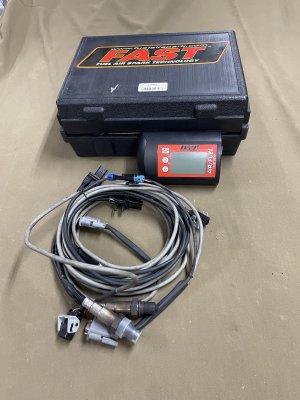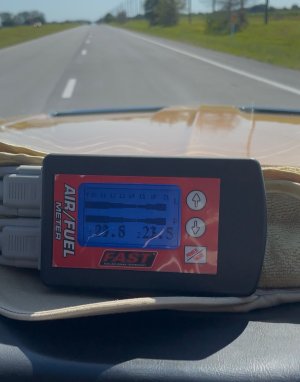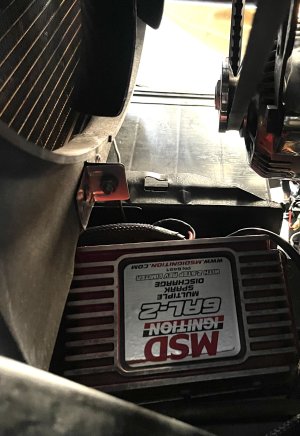I have no system that you are referring to, tps or a way to chart the o2 readings.
Gotcha.
So you are probably running a carb and using the "Fast" box to tune it?
All of your 'old school' diagnostic skills are still perfectly valid, and will need to be used to diagnose what is causing your "AFR mystery" (and any perceptible performance issues!)
Reading the spark plugs is a good direct check of in-cylinder mixture conditions, and is still used today to cross check O2 sensor readings. It is just WAY less convenient!
I looked at the "Fast" link, and they claim a variety of "data logging" options. One of which was playback on the box display if I am reading it right?
There was a time before computerized fuel injection where data logging was done in a much more analog way. Typically the recording device was a movie camera, aimed at a variety of human readable gauges.
This may seem a primitive method to us now..... But in the right hands, it was powerful enough to develop nuclear arsenals and land humans on the moon.
Today, thanks to creeping Surveillance Capitalism, pretty much everyone has on their person a miniaturized movie camera with a near instant film development lab, and nearly infinite film.
So you COULD go full "Apollo Mode" and datalog in Gauge and Video!
My suggestion would be a good cell phone mount facing the dash, probably just passenger side of the driver's head.
I'll try to list some of the most common sensors that would be used in an EFI dumped data log, and analog versions:
EFI sensor..,....Analog gauge
Time..... Stopwatch on Dash
RPM ..... Dash Tach
MAP ..... Vacuum gauge
TPS. ..... Locked ankle and knee flag?
O2. ..... That would be your "Fast" display.
There are other EFI only things that have no real analogue. The primary useful one being injector pulse width or duty cycle. It is a real-time measure of how long the fuel injectors are held open.
One of the problems you might run into is time resolution. With just fin de siecle OEM narrow band sensors, the response time I see for O2 readings is about 0.5 seconds for a "rich-lean-rich" transient from say, 0.7V to 0.4V and back. So half of this peak is passing in 250 milliseconds. This is pretty hard for a human eye to register, and your "Fast" display may be doing some smoothing that could completely mask it. It also happens to be about the time frame of a transient misfire/stumble. The kind that you can hear, and maybe just feel if you are under load. Ideally you would want to be able to re-play your video in slo-mo, and somehow do the same with your "Fast" box data play back.
If all of this sounds like a pretty serious High School Physics Lab project....well, that's just exactly what it is!
Before you go this route, I expect you will have run a good vacuum leak check, plug check, timing check, exhaust leak check, and especially O2 bung check and maybe swap out (if your Fast has 2 as pictured?).
You will probably find the culprit before going all mid '60s NASA on your WIP!
 . Or am I right?
. Or am I right?



